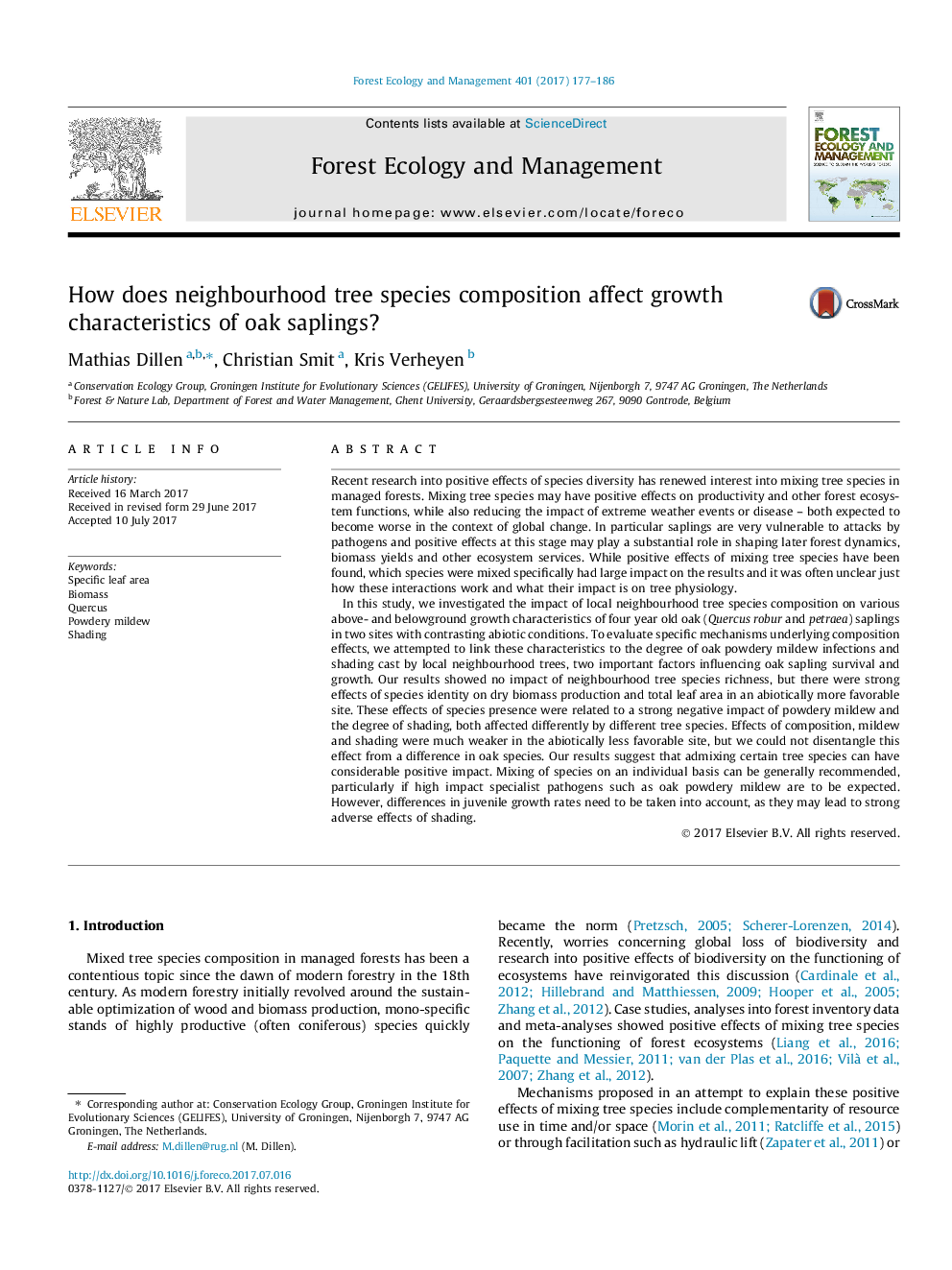| Article ID | Journal | Published Year | Pages | File Type |
|---|---|---|---|---|
| 4759312 | Forest Ecology and Management | 2017 | 10 Pages |
Abstract
In this study, we investigated the impact of local neighbourhood tree species composition on various above- and belowground growth characteristics of four year old oak (Quercus robur and petraea) saplings in two sites with contrasting abiotic conditions. To evaluate specific mechanisms underlying composition effects, we attempted to link these characteristics to the degree of oak powdery mildew infections and shading cast by local neighbourhood trees, two important factors influencing oak sapling survival and growth. Our results showed no impact of neighbourhood tree species richness, but there were strong effects of species identity on dry biomass production and total leaf area in an abiotically more favorable site. These effects of species presence were related to a strong negative impact of powdery mildew and the degree of shading, both affected differently by different tree species. Effects of composition, mildew and shading were much weaker in the abiotically less favorable site, but we could not disentangle this effect from a difference in oak species. Our results suggest that admixing certain tree species can have considerable positive impact. Mixing of species on an individual basis can be generally recommended, particularly if high impact specialist pathogens such as oak powdery mildew are to be expected. However, differences in juvenile growth rates need to be taken into account, as they may lead to strong adverse effects of shading.
Related Topics
Life Sciences
Agricultural and Biological Sciences
Ecology, Evolution, Behavior and Systematics
Authors
Mathias Dillen, Christian Smit, Kris Verheyen,
